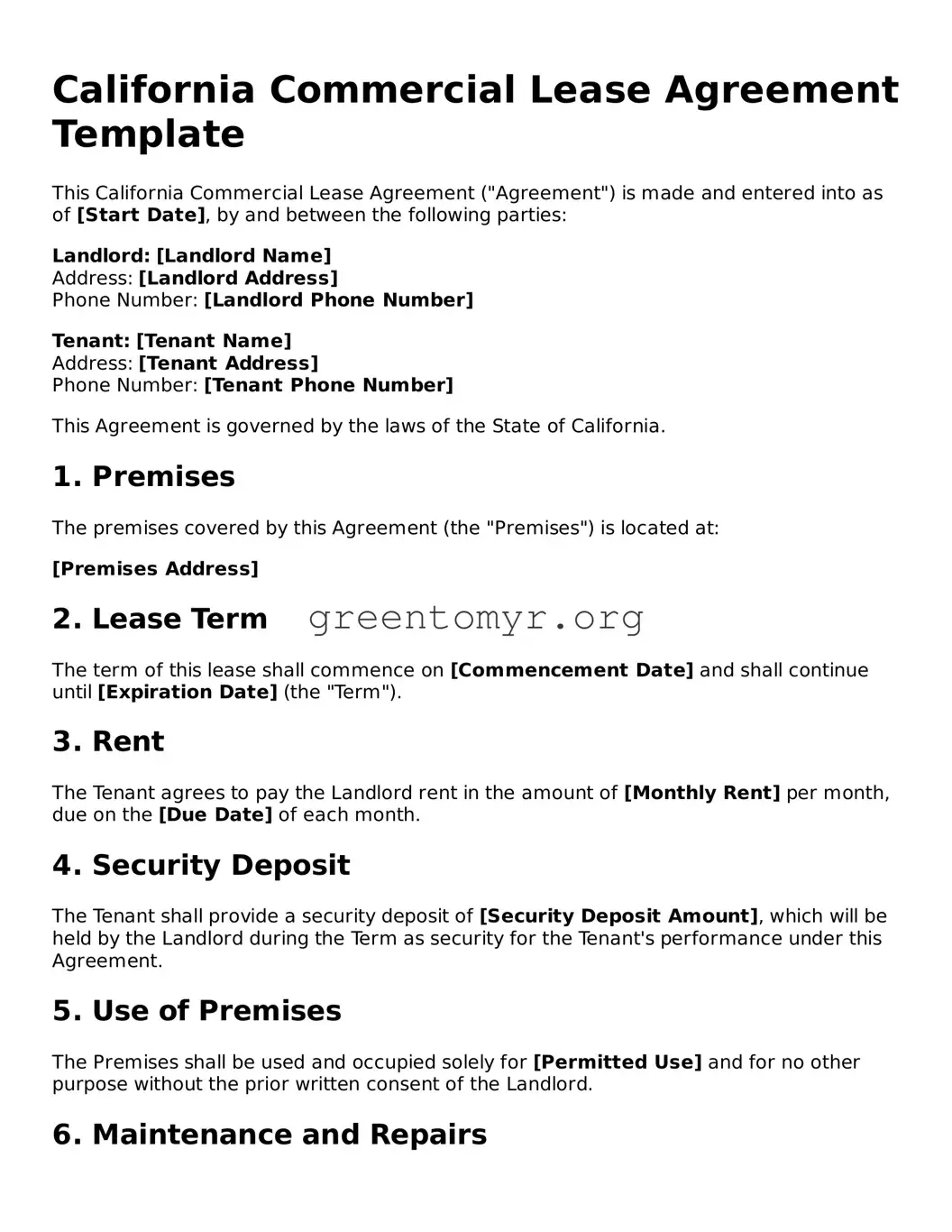California Commercial Lease Agreement Template
This California Commercial Lease Agreement ("Agreement") is made and entered into as of [Start Date], by and between the following parties:
Landlord: [Landlord Name]
Address: [Landlord Address]
Phone Number: [Landlord Phone Number]
Tenant: [Tenant Name]
Address: [Tenant Address]
Phone Number: [Tenant Phone Number]
This Agreement is governed by the laws of the State of California.
1. Premises
The premises covered by this Agreement (the "Premises") is located at:
[Premises Address]
2. Lease Term
The term of this lease shall commence on [Commencement Date] and shall continue until [Expiration Date] (the "Term").
3. Rent
The Tenant agrees to pay the Landlord rent in the amount of [Monthly Rent] per month, due on the [Due Date] of each month.
4. Security Deposit
The Tenant shall provide a security deposit of [Security Deposit Amount], which will be held by the Landlord during the Term as security for the Tenant's performance under this Agreement.
5. Use of Premises
The Premises shall be used and occupied solely for [Permitted Use] and for no other purpose without the prior written consent of the Landlord.
6. Maintenance and Repairs
- The Tenant shall keep the Premises in good order and condition.
- The Landlord shall be responsible for major structural repairs.
7. Termination
This Agreement may be terminated under the following conditions:
- By mutual agreement of both parties.
- By written notice, as stipulated in the Agreement.
8. Governing Law
This Agreement shall be governed by and construed in accordance with the laws of the State of California.
9. Signatures
In witness whereof, the Landlord and Tenant have executed this Agreement as of the day and year first above written.
Landlord Signature: ______________________
Date: [Date]
Tenant Signature: ______________________
Date: [Date]
